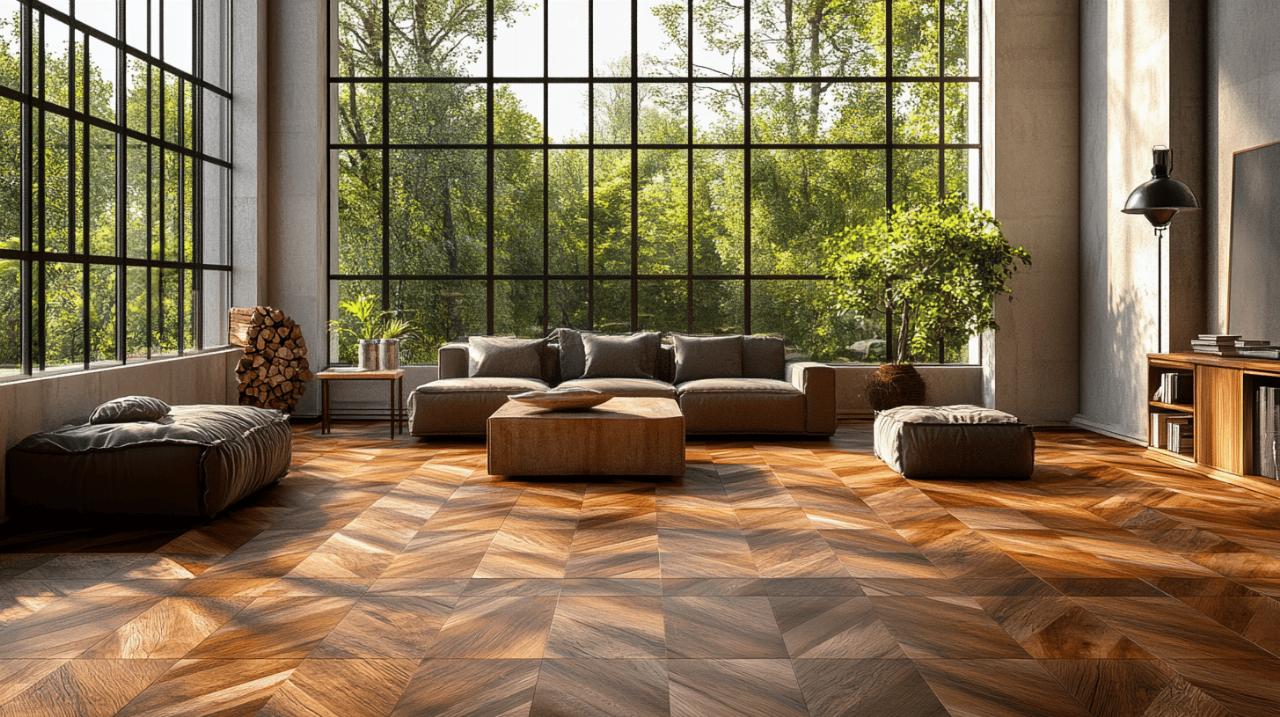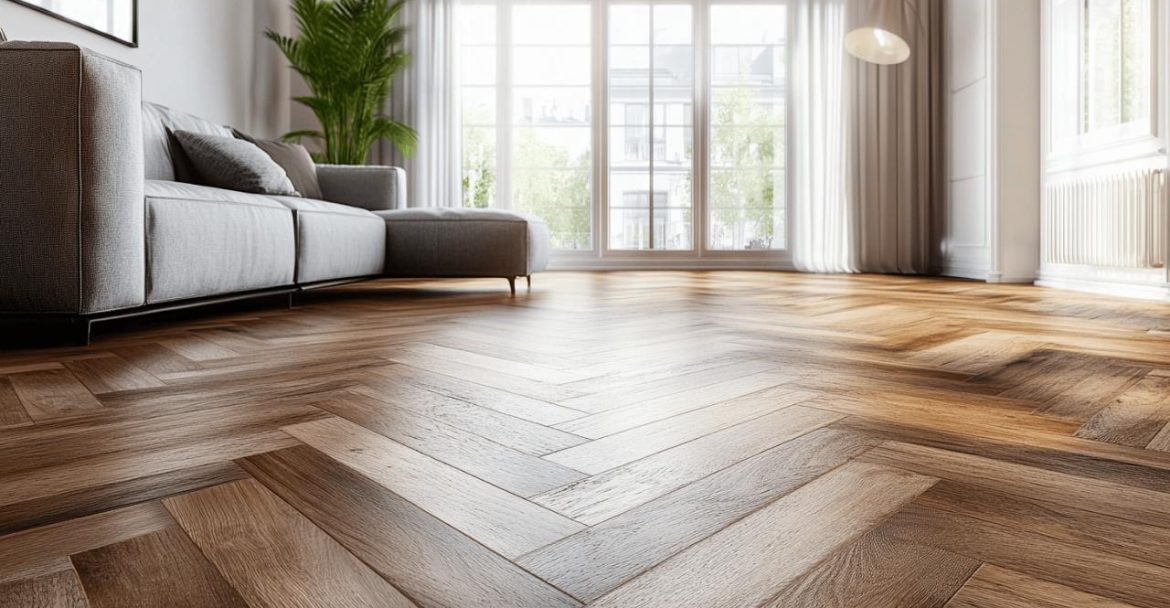When it comes to transforming your home’s interior, few elements make as significant an impact as flooring. The choice of parquet flooring has become increasingly popular among UK homeowners looking to add character and warmth to their living spaces. Beyond selecting the material and pattern, understanding how orientation affects the overall aesthetic can dramatically enhance your home’s visual appeal. Properly aligned parquet can create optical illusions, interact beautifully with light, and even make rooms appear larger than they actually are.
Understanding parquet flooring basics
Parquet flooring represents the epitome of flooring craftsmanship, bringing geometric patterns and natural wood textures together to create visually striking surfaces. Before diving into orientation considerations, it’s worth exploring the variety of options available to UK homeowners. The right knowledge will guide your decisions when visiting decoration shops or consulting with https://www.tiendasdedecoracion.es/ for inspiration on your next home improvement project.
Types of parquet patterns available in the market
The UK market offers several distinctive parquet patterns, each creating a unique visual impact. The herringbone pattern, with its characteristic zigzag arrangement, brings classical elegance to any room and has been a staple in British homes for centuries. For those seeking a more contemporary look, the chevron pattern creates clean, sharp V-shapes that draw the eye along their directional flow. The basket weave pattern offers a more intricate interlaced appearance reminiscent of woven textiles, while the grand Versailles pattern delivers a touch of French palace luxury with its complex geometric arrangement.
Material options vary significantly in both appearance and performance. Solid wood parquet represents the traditional choice, offering authentic appeal and longevity, albeit at a premium price point of £50-£95+ per square metre. Engineered wood provides a more practical alternative at £40-£85+ per square metre, combining real wood veneer with a stable core that better withstands temperature fluctuations, making it compatible with underfloor heating systems. For moisture-prone areas, luxury vinyl tile recreates parquet aesthetics with waterproof properties at £25-£45+ per square metre, while laminate offers the most budget-friendly option at £15-£30+ per square metre with good scratch resistance.
How parquet material affects visual impact
The material selection dramatically influences how light interacts with your parquet flooring. Solid hardwood varieties like Merbau, Kempas, and Balau each reflect light differently based on their natural grain patterns and colour variations. Darker woods create a sense of warmth and intimacy, while lighter species can make spaces feel more open and airy. Engineered wood maintains the authentic appearance of solid wood but offers more stability in changing environmental conditions, making it particularly suitable for conservatories and areas with fluctuating humidity.
The finish applied to your parquet also significantly affects its visual characteristics. Matte finishes reduce glare and hide minor imperfections, while satin or gloss finishes reflect more light and can help brighten darker spaces. Custom staining allows for personalization, enabling you to coordinate your flooring with existing décor elements. When selecting parquet materials, consider how they will age and develop character over time, as this patina becomes part of your home’s evolving aesthetic story.
How direction influences room perception
The orientation of parquet flooring goes beyond mere technical installation considerations; it fundamentally shapes how we perceive spaces. When planned thoughtfully, the direction of your flooring can complement architectural features, enhance natural lighting, and even create optical illusions that address spatial challenges in your home. Floor insulation also plays a crucial role alongside orientation, providing not just thermal benefits but contributing to the overall comfort and healthiness of your living environment.

Creating illusions of space through orientation
Strategic orientation of parquet flooring can visually transform room dimensions. A common design principle suggests laying floors parallel to the longest wall, which naturally draws the eye along this extended line, making rooms appear larger and more spacious. In narrow hallways or corridors, this technique proves particularly effective at countering the tunnel effect often experienced in such spaces. For open-plan areas, consistent orientation throughout helps unify the space, while deliberate changes in direction can subtly delineate functional zones without requiring physical barriers.
Beyond the standard perpendicular installation to floor joists for structural stability, consider how parquet orientation might emphasize or downplay certain architectural elements. Diagonal placement creates dynamic visual interest and can make square rooms appear more spacious by drawing the eye across the diagonal, which is always the longest dimension in a rectangular space. For rooms with irregular shapes, thoughtful orientation can help normalize the perception of the space, creating a more balanced and harmonious feel.
Light reflection considerations with different layouts
Natural light interaction with parquet flooring creates a constantly changing canvas throughout the day. When planning orientation, observe how sunlight enters your rooms at different times, as this will significantly influence how the flooring appears. Installing parquet perpendicular to major light sources often maximizes the interplay between light and the wood’s natural grain, creating beautiful shadow patterns that add depth and character to the space. This orientation consideration is particularly important in north-facing rooms that receive less direct sunlight and can benefit from maximizing available light reflection.
The relationship between floor direction and light can be further enhanced through proper preparation and finishing. Before installation, it’s essential to assess moisture levels with a moisture meter and acclimatise your wood flooring to the room’s conditions for at least 48 hours. This preparation ensures the wood will remain stable after installation, preventing unsightly gaps or buckling that would disrupt the visual flow. The choice of finish affects not just durability but also how light interacts with the surface, with each option offering different reflective properties that can either amplify or soften natural and artificial lighting within your space.

